Rainy Days and Mundis: Episode 3
By Mento 0 Comments
Our look at the cottage industry that are HOPA games - Hidden Object Puzzle Adventures, though I'm still not certain if that's common nomenclature or just some Steam reviewer's preferred acronym (and I know a lot about preferred genre names that no-one else uses) - continues this week with the introduction of yet another developer who works alongside our old titular friends Artifex Mundi: Brave Giant LTD, who I believe are based in Serbia, a few hundred miles south of Artifex Mundi's HQ in Poland. Brave Giant are a fairly busy development studio, producing also the Queen's Quest trilogy (I see what they did there) and the Demon Hunter trilogy, as well as a number of one-offs that includes today's case study.
Tiny Tales: Heart of the Forest is a 2017 HOPA that I would imagine is heavily inspired by Mary Norton's The Borrowers, with a civilization of tiny humans that live alongside - and communicate with - mice, rats, and other normally small woodland creatures. The player returns to their home village to respond to an urgent call to arms from the King: there's a drought that's causing untold damage to the crops and plantlife, and a brave warrior needs to go investigate the source of the water shortage and fix it. Curiously, while there's human-sized junk everywhere that the citizens of this world have re-purposed in several ways - playing cards become partitions, spoons are digging instruments, matches for torches, etc. - there's no mention of or appearance by their colossal cousins. Maybe it's like Pikmin 2, where the disappearance of our species is a mystery better left unsolved.
Episode 3: Tiny Tales: Heart of the Forest
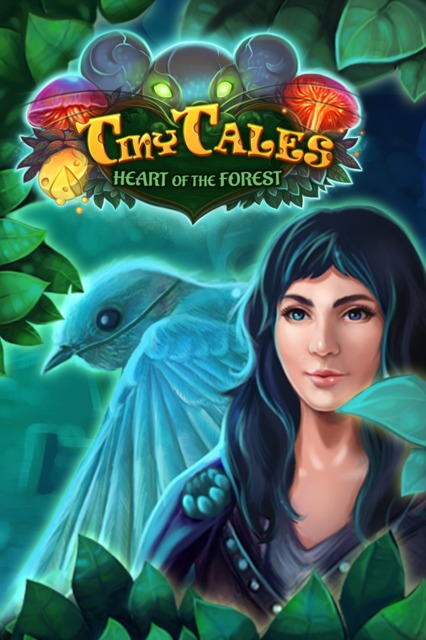
Look.
I'm done beating around the bush with this series. We need some cold, hard facts about the way these games seem to come off an assembly line, and that means gathering as much data as possible. For that reason, I took the liberty of listing every single instance of a puzzle and its type. If I'm going to draw any kind of grand conclusion at the end of this feature, if and when I decide to end it, I need more points of reference. So buckle up, buckaroos; it's statistics time:
- Heart of the Forest had no fewer than thirty-five Hidden Object instances, which is the highest ratio of hidden object puzzles to all other puzzle types I've seen so far in this feature (I'll conservatively say there were around 25 of all the other puzzle types combined). They mixed things up a little by changing the parameters for these hidden object assortments - seven required checking a list of words (i.e. the standard variant; the carbon-12 if you will), while eleven involved finding several instances of the same basic item - keys, mushrooms, tiles, etc. - and the rest actually gave you the shape of the object to look out for.
- We have one instance of the "pick a route without crossing the streams" of the type where you have a grid and several pairs of objects to draw links between, but there was also one where you had to do the same thing with several tied knots that involved moving them around so the ropes wouldn't cross and another where you have to traverse a map without hitting the same point twice. Heart of the Forest was fond of those.
- It was also fond of timing mini-games where you have to hit the button as the reticle passes over the critical area. Not so much a puzzle but a QTE, and not a particularly compelling one either. The game has quite a bit of combat, unusually, and most of this involved shooting lightning bolts at rats. In addition to aiming mini-games, there's also several where you have to move left or right to keep your balance or avoid danger in the path. It was a pretty active adventure game, comparatively speaking, though we're not talking Uncharted levels quite yet.
- One of these lightning bolt rat fights involved a memory match puzzle, with each miss causing you damage. A bit of an odd system given how much guesswork is involved in a memory match game, but it didn't seem like you had a health gauge to worry about.
- There were several instances of "dominoes" puzzles - where you have to match several items in a series by their mutual traits. This could involve matching patterns, matching colors, and matching digits. A tangential case involved creating links between numbered squares where the number was the maximum amount of links that should lead from that number: fairly simple with some trial and error, but not an easy one to suss out the proper way.
- There was exactly one sliding block puzzle, mercifully, and it was a simplified variant: rather than having a solitary empty space with which to maneuver all the tiles into place, the player could select any two adjacent tiles to switch them. Way easier. Talking of easy, we also saw a traditional maze which was simple to solve at a glance, some basic "put the right objects in the right slots" jigsaw variants (including one puzzle that was repeated with the exact same pieces), and one of those puzzles where hitting a piece turned "on" or "off" the adjacent pieces and you had to figure out how to make them all the same. I've seen that type of puzzle a lot since I started this feature.
- You know what I haven't seen yet, though? The Tower of Hanoi. Only a matter of time, I suppose.
As for similarities with what has come before:
- The two sets of collectibles are back. They tended to alternate between screens, but because there were different amounts of both - 20 mouse ragdolls and 16 coins with cheese on them, because this game was infested with vermin - you usually saw the ragdolls on consecutive screens more frequently. Both the other games had this set-up too.
- Unlike The Legacy of Vulcan, you didn't actually travel too far from where you started in terms of sheer distance (in fact, the map's probably a square yard given how small everyone is), so the game's bizarre insistence on barring off previous areas made backtracking for collectible-hunting impossible. On the flip-side, less backtracking made the inventory puzzles easier to manage, so it's a trade-off.
- This game also had The Legacy of Vulcan's "transforming objects", but instead of making them collectibles they're part of the hidden object tableaux. Makes it hard to hunt for certain items if they keep turning into random trash the moment before your eyes wander to that part of the image, but since you're already staring intently at the screen in these puzzles they're not too difficult to spot. The irritation is waiting until they transform back into the item you need.
- The presentation is again identical: first-person perspective with the inventory across the bottom, the really ugly zooming-in on parts of the screen when something exciting is happening, the generally poor and blurry animation for characters, your graphical user interface being represented by various objects at the corners of the screen that represent hints, the map, the journal (for what you should be doing next) and the main menu, and so forth. The actual GUI from HOPA to HOPA looks subtly different to better fit with the theme of its particular game, but its functionality is always the same.
Differences:
- Besides the usual story and theme stuff - we've yet to do any "tiny humans in a Borrowers type small-scale universe" - the most major divergence in this game is the protagonist: Max, a male. This is despite a female character featuring prominently on the Steam page and tab/icon. That character, Ellie, is sort of a friendly rival of yours: she's the one who rides around on a rabbit and occasionally helps you out (and you, her) in dangerous times. It's almost like a weird bait-and-switch: she's self-sufficient, self-assured and tough, and clearly is doing just fine with the puzzles if she keeps showing up wherever you go, and even managed to complete the same trial that the Mouse King has for prospective heroes - all traits of the usual crafty ingenue protagonist that these games feature. Perhaps she just lost out on the starring role at the last moment?
- There's a spell system! I always like when adventure games have these for the extra puzzle-solving opportunities they provide, whether they're something you can call on whenever you wish - as was the case with the Death Gate game - or something you have to conjure up the ingredients for each time, like the voodoo spells from Monkey Island or Jolly Rover. Heart of the Forest doesn't really rely on them too often, with half the spells used exactly once, but it does make finding the runes needed to cast them an extra layer of hidden object detection. Because the game needed another excuse to hide weird crap in plain sight.
- The game was overall simpler than the previous two, as I suspected with the slightly more kid-friendly theme and look. As well as the overwhelming abundance of hidden object screens, most of the usual puzzles were either simplified or just easier in general, and the compartmentalized zones meant the inventory puzzles were more manageable too... though I still had a few roadblocks from time to time.
As before, I have a selection of images to demonstrate the above:
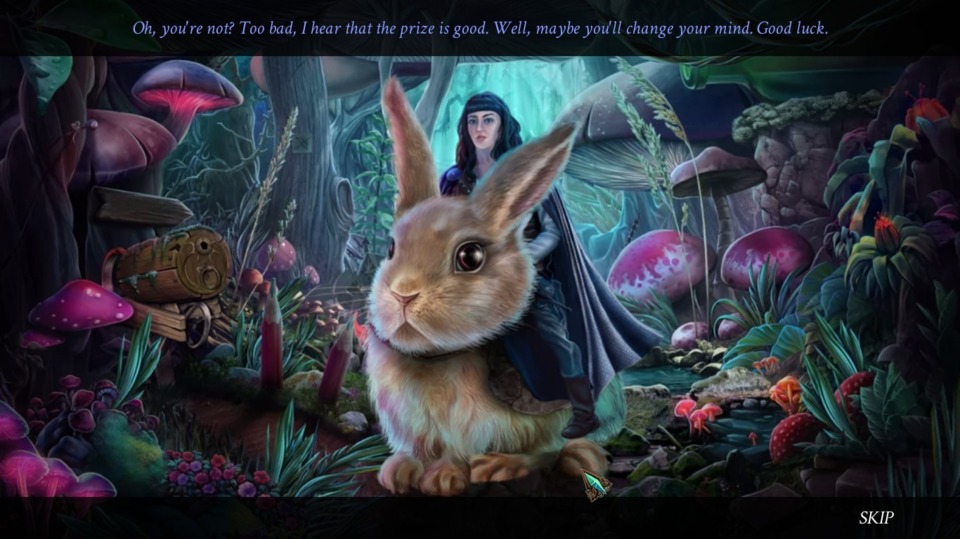
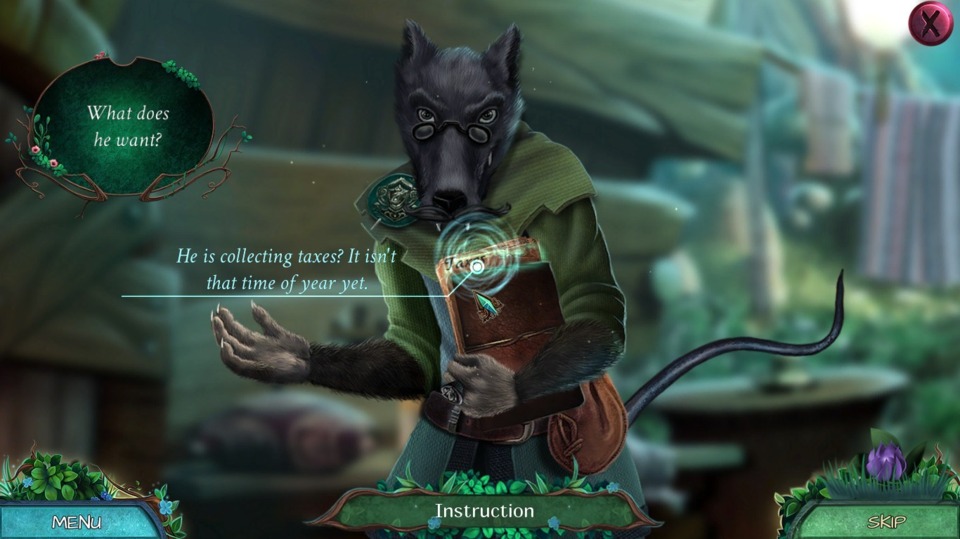
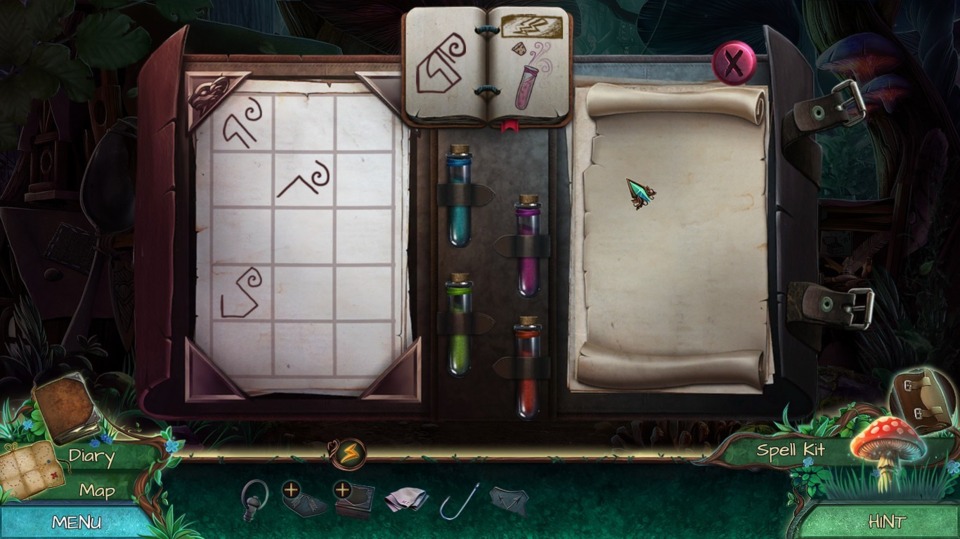
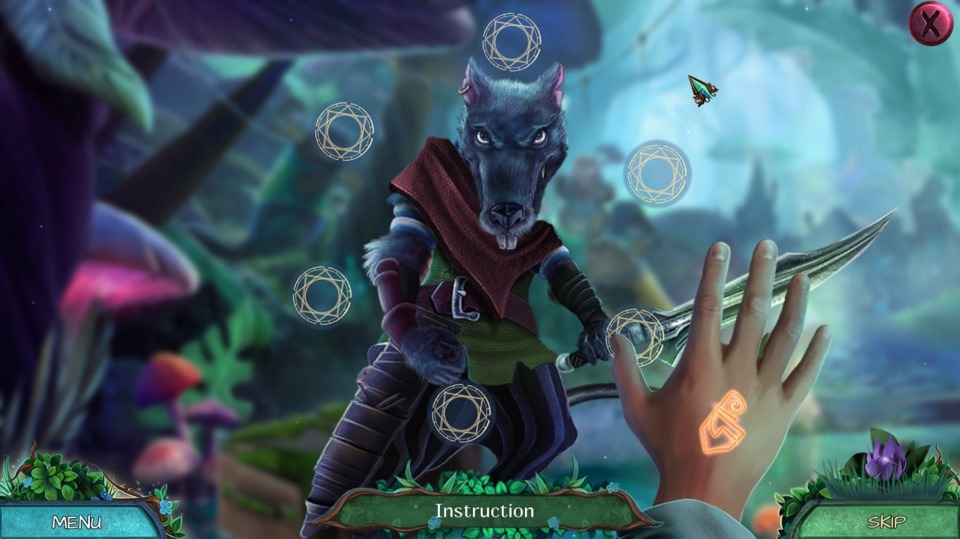

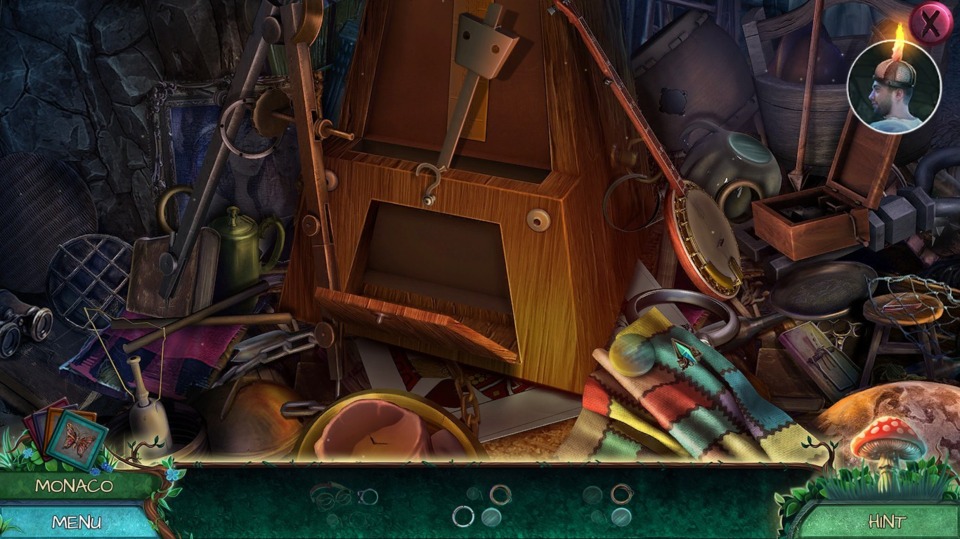
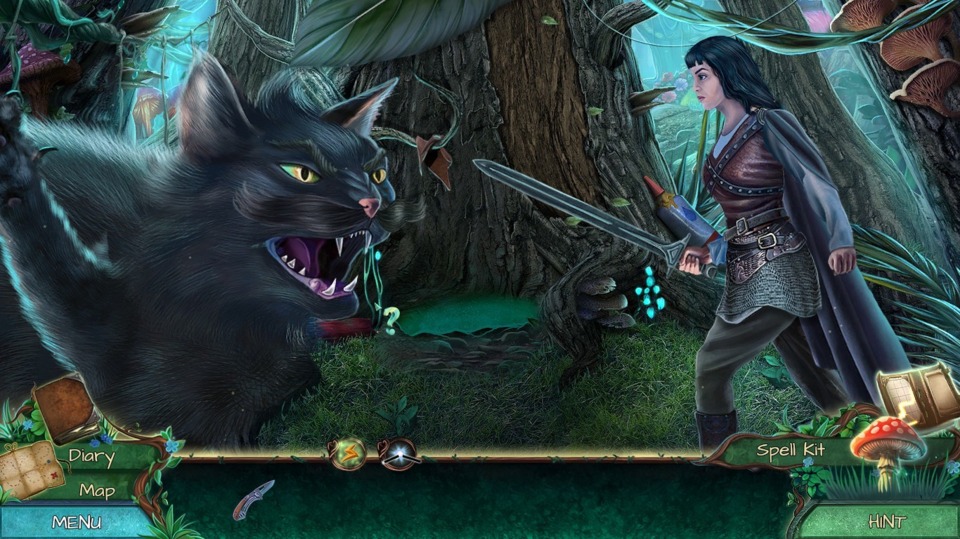
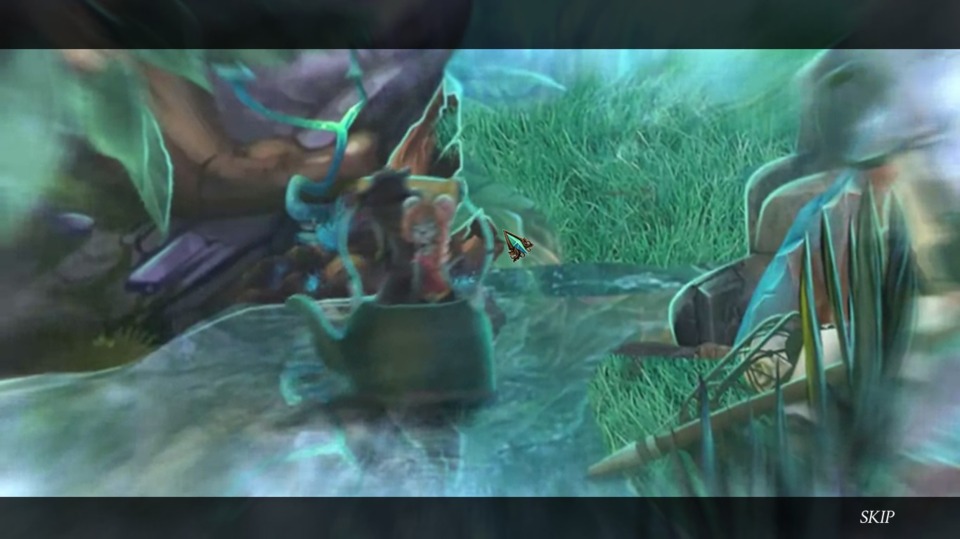
Next time... I may start enumerating the inventory puzzles too, including their relative complexity levels and how often you're required to find multiple parts to a thing or are required to combine items before you have what you need. "In for a penny, in for a pound" at this juncture, right? Didn't think I was going to lose my mind in 2018 but... no, OK, I fully expected to lose my mind this year. Besides the gaming, it's been garbage city so far.
